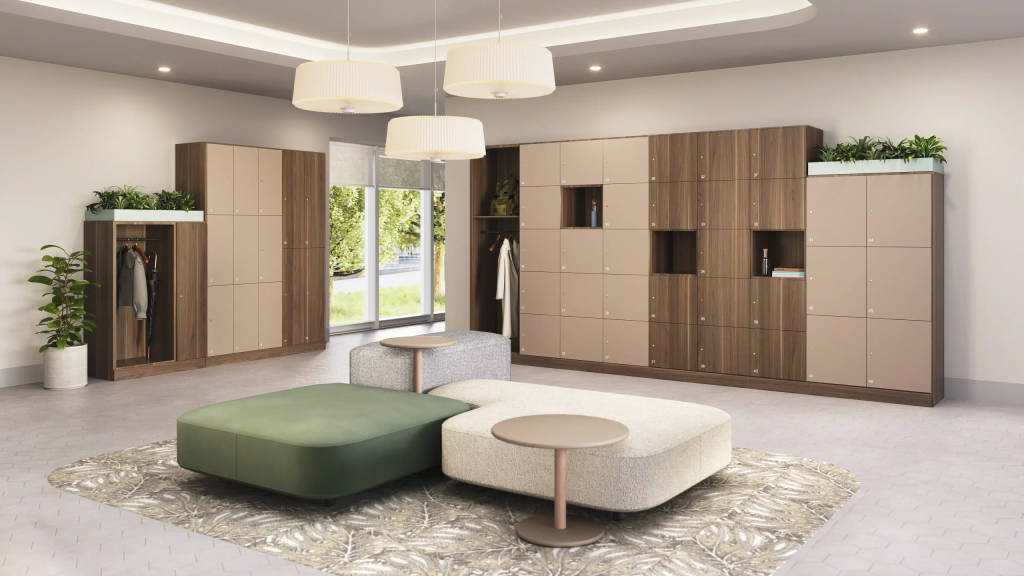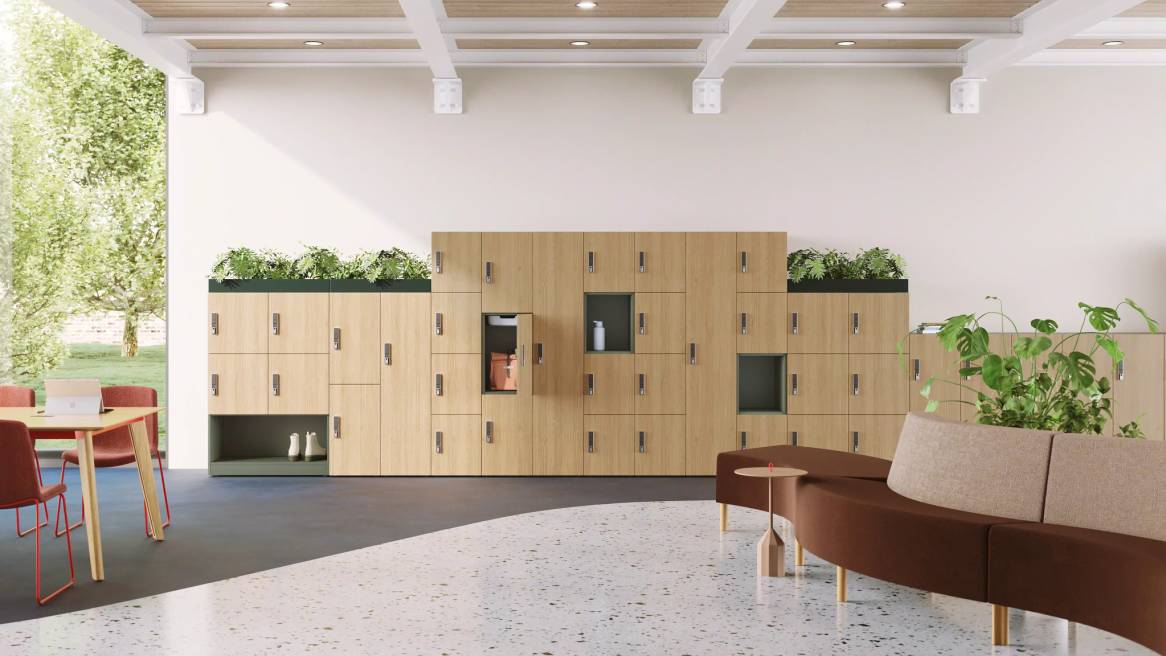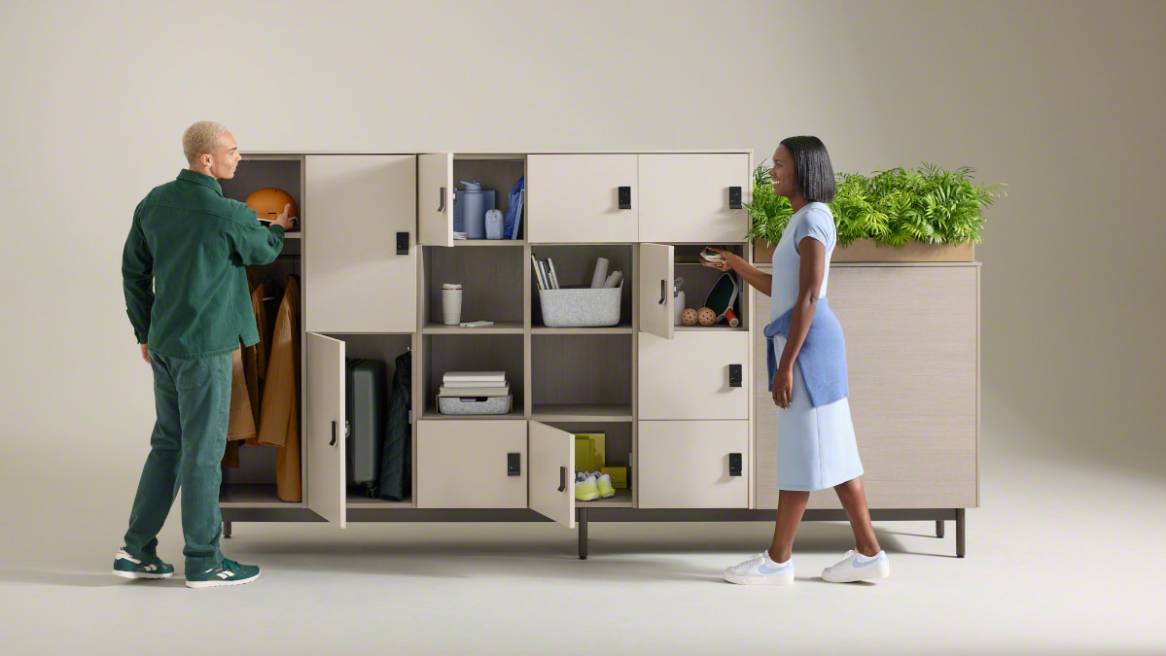The Modern Locker Wears More Hats than Ever Before
How office storage solutions have transformed to support people’s diverse needs in the era of hybrid work
Offices have transformed significantly with the rise of hybrid work. Work is more dynamic than ever, and people’s storage needs have shifted. They’re not just looking for a place to store file folders and paper documents; they need a place to keep their belongings safe while they focus on work, especially now as more workstations are shared.
Steelcase conducted in-depth research to examine the locker’s role in the modern workplace. They followed people throughout the workday to understand what they’re bringing to the office, their work patterns, when and how often they use lockers, and any pain points they experience. The goal was to gain a thorough understanding of what people need and how they use lockers, as well as balance user needs with decision-makers needs. The research showed that lockers need to do more than store. They can play a significant role as a gathering space to help people connect with others, enhance team ownership, and provide visual shields in the open floorplan.

A bigger role for lockers
“We took on the challenge to create a new, comprehensive locker system that supports what people need today,” says Steelcase Industrial Designer Viola Vallon, who led the team that developed WorkValet™, Steelcase’s latest locker solution. “Every component of WorkValet is designed with functionality, aesthetics and flexibility in mind — all elements are created to establish a sense of comfort and familiarity.”
Lockers were originally created to store coats and bags – and compartment sizes were based on that. Today, people are more mobile and often do not have a dedicated workstation where they can store their belongings. They need a secure space where they can keep personal items like laptops, water bottles, bike helmets and luggage safe, so they can have peace of mind as they work.
“As we observed people in the office transition between different activities throughout the day we recognized what a critical role lockers can have in supporting those transition moments,” says John Spykman, product developer at Steelcase. “Whether it’s a place to start and end the day, a frequent stop in a team’s space, a transitional space to visit in between meetings or when they’re switching between focus work and collaboration, people need places that are easily accessible so they can comfortably pack and unpack their belongings. We designed WorkValet to provide them with a ‘landing zone’ — a space on top of the locker or an open cubby — where they can comfortably and easily do this.”
Modern locker storage solutions can also meet spatial needs previously served by fixed walls and room dividers. Lockers can act as team boundaries, providing space division while fostering collaboration and a sense of belonging, solidifying team ownership. “The flexibility of WorkValet enables a variety of configurations, allowing designers to optimize space better. The ability to specify within a 16th of an inch gives designers a lot of choice for how to design with it,” says Spykman. “Its versatile design can create a freestanding version providing a two-sided boundary, be built in front of a wall, or fitted into an architectural nook.”
Other features informed by user observation include an elevated base allowing for easier access to bottom lockers, which were rarely used because they were too difficult to reach. The lighter aesthetic (compared to traditional lockers) also creates a warmer and more pleasing working atmosphere.

What modern workers expect
Steelcase research categorized the data into three types of employees based on how often and when they are in the office – anchored, untethered and destination workers.
Anchored workers spend most of their working time in the office and tend to store items they need to access quickly, such as laptops, water bottles, lunch boxes, and gym bags. Typically, lockers were only placed near entrances, far away from where people were working. Lockers for anchored workers should be in close proximity to their workstations, as they need to access their belongings multiple times throughout the day.
Untethered workers – often considered hybrid workers – spend about half of their time in the office. They switch between remote work and in-office work on a daily or weekly basis and want practical storage for personal items. They need to know their belongings are safely tucked away and will typically use the lockers at the beginning and end of the day.
Destination workers are travelers who come into the office occasionally, a few days a month, usually for specific meetings. Often traveling from further away, they’re looking for a safe storage solution for more oversized items like coats, backpacks, or luggage. The ideal office locker for destination workers is often at the entrance or in easily accessible community spaces.

“WorkValet does more than store things – it ultimately contributes to an inviting office atmosphere with its versatility,” says Vallon. “All of its carefully designed elements work together to ensure people feel supported and comfortable as they journey through their day.”



